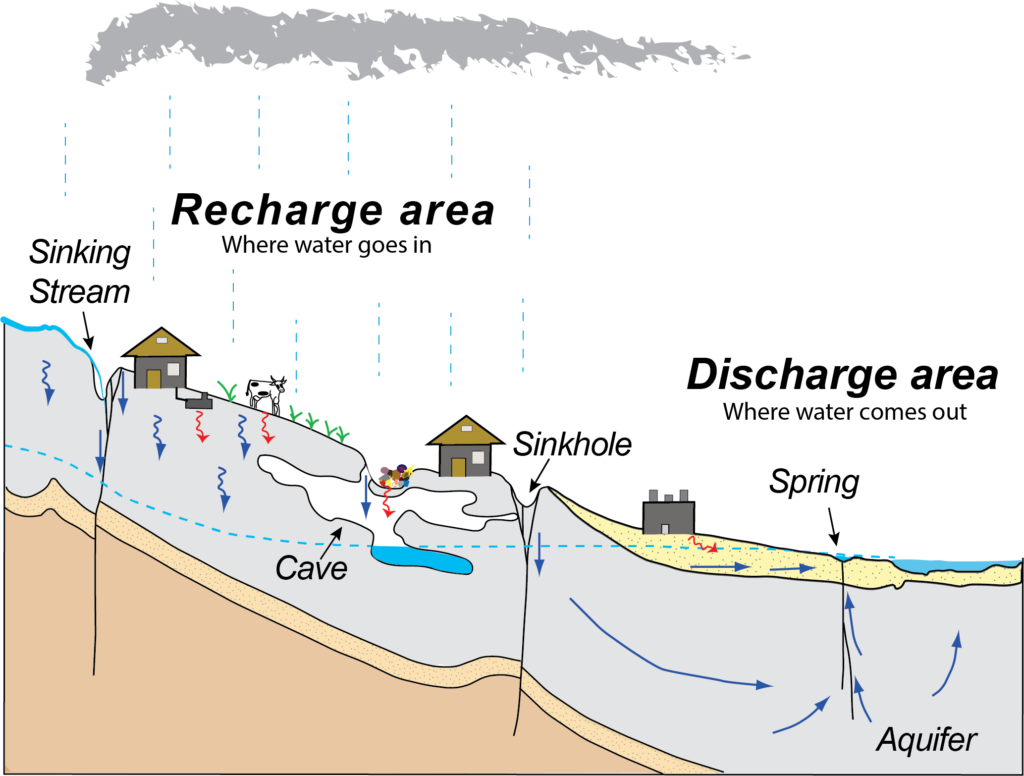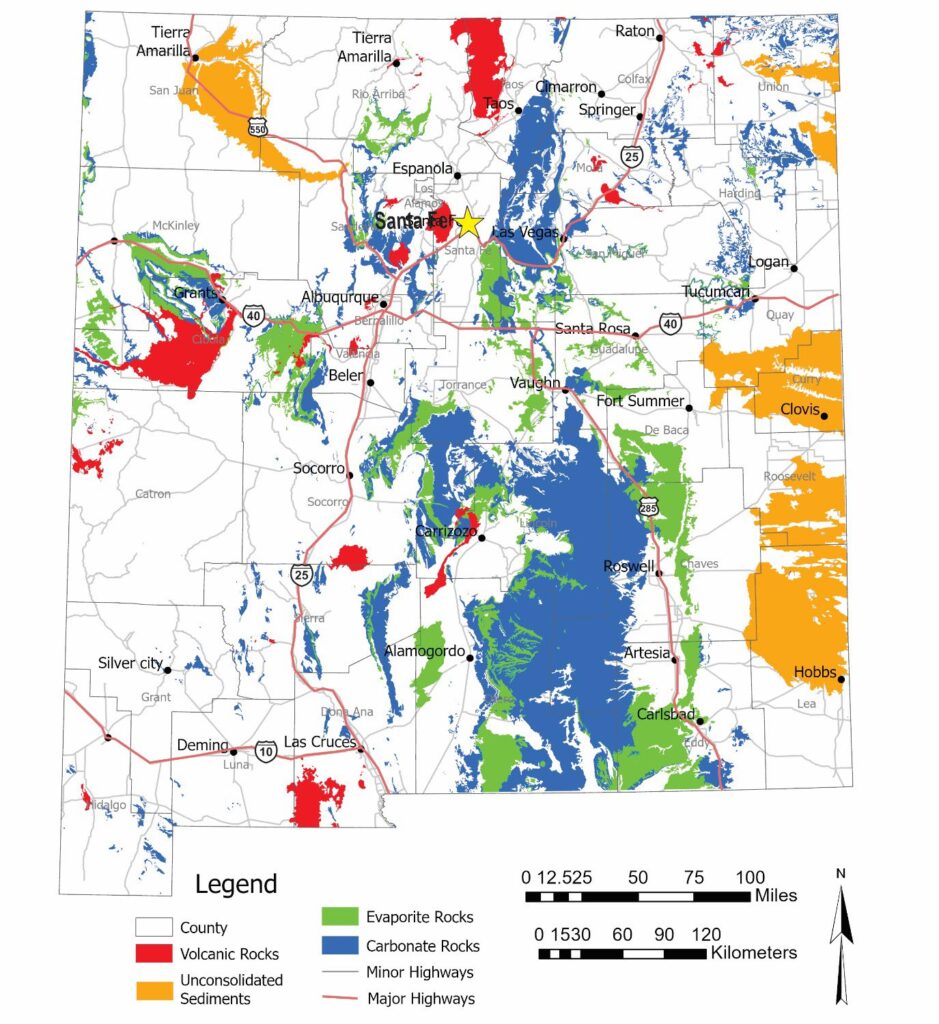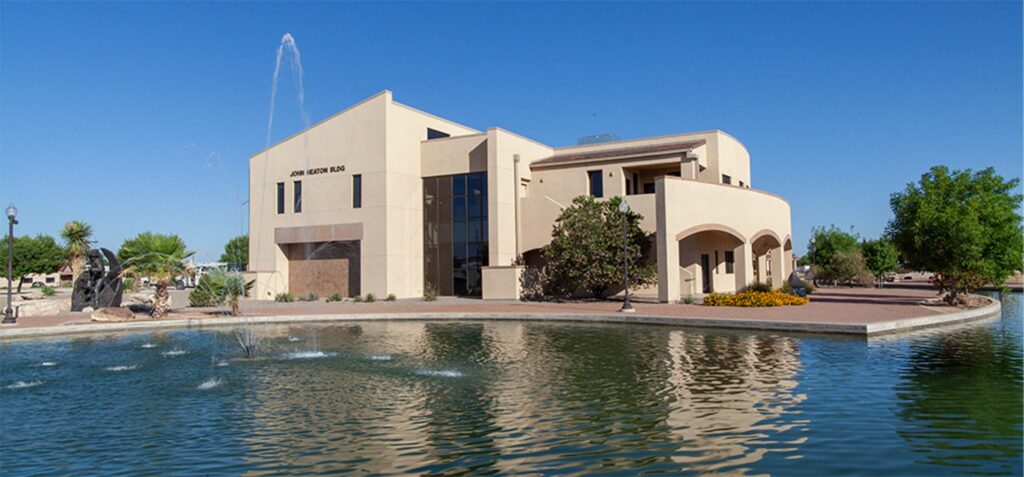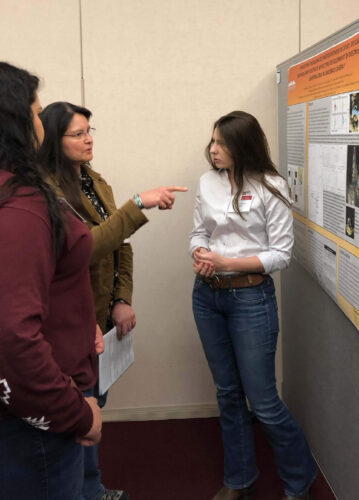History
Nearly 20% of the United States is karst. Karst is the landscape that forms on soluble rock and includes caves, sinkholes, sinking streams and other features that come with unique hazards and vulnerable resources. Caves are important for tourism and recreation but are also sensitive environments that store information on groundwater, human history, Earth’s history and extremophile microbes. Karst systems are large interconnected pathways that can readily transport materials across multiple jurisdictions. A specialized institute was created to study caves and karst to connect scientists, land managers, academic institutes and people living on karst.

With this in mind, the National Cave and Karst Research Institute (NCKRI) was created to be administered by the National Park Service and another agency. In the early 1980s, cave and karst specialists Jim Goodbar (Bureau of Land Management) , Ronal Kerbo ( National Park Service) and Jerry Trout (US Forest Service), saw a need for a collaborative organization with expertise in cave and karst resource issues. These discussions led to a feasibility study, which concluded Carlsbad, New Mexico, with its location to a variety of cave resources and land management styles as the ideal location to begin this initiative.

In 2004, with the assistance from Carlsbad mayors Bob Forrest and Gary Perkowski, New Mexico State Representative John Heaton, and US senators Jeff Bingaman, and Pete Dominici, NCKRI became one of the research institutes of the New Mexico Institute of Mining and Technology (NMT). NMT’s expertise in training geoscientists and reputation for being a part of cutting edge research supported the institute’s interdisciplinary mission. With financial support from the city of Carlsbad, the state of New Mexico and the NPS, NCKRI finally broke ground for its headquarters in 2008.

Following the Acts and Actions
November 18, 1988: Federal Cave Resources Protection Act
Enacted: “to secure, protect, and preserve significant caves on Federal lands for the perpetual use, enjoyment, and benefit of all people; and to foster increased cooperation and exchange of information between governmental authorities and those who utilize caves located on Federal lands for scientific, education, or recreational purposes.”
November 15, 1990: Cave Research Institute Study
The Secretary of the Interior is directed to develop a feasibility study to establish a “Cave Research Institute” to include the need, costs, purpose, and location.
December 1994: Report to Congress
Found the need for a national research laboratory dedicated to caves and karst. The report was used as the basis of the National Cave and Karst Research Institute Act.
October 30, 1998: National Cave and Karst Research Institute Act
The US Congress created NCKRI in 1998 in partnership with the State of New Mexico and the City of Carlsbad, initially as an institute within the National Park Service.
May 19, 2004: National Cave and Karst Research Institute Creation
The National Cave and Karst Research Institute is created in Carlsbad and becomes a division of the New Mexico Institute of Mining and Technology.
NCKRI’s mandates are listed below:
- further the science of speleology;
- centralize and standardize speleological information;
- foster interdisciplinary cooperation in cave and karst research programs;
- promote public education;
- promote national and international cooperation in protecting the environment for the benefit of cave and karst landforms;
- promote and develop environmentally sound and sustainable resource management practices.
Accomplishing Our Goals
NCKRI is catalyzing the advancement of cave and karst knowledge by conducting research, promoting education, and facilitating sustainability.
Further Reading
- Study to Congress:
Resource One | Resource Two - Cave Protection Act
National Cave and Karst Research Institute Act
